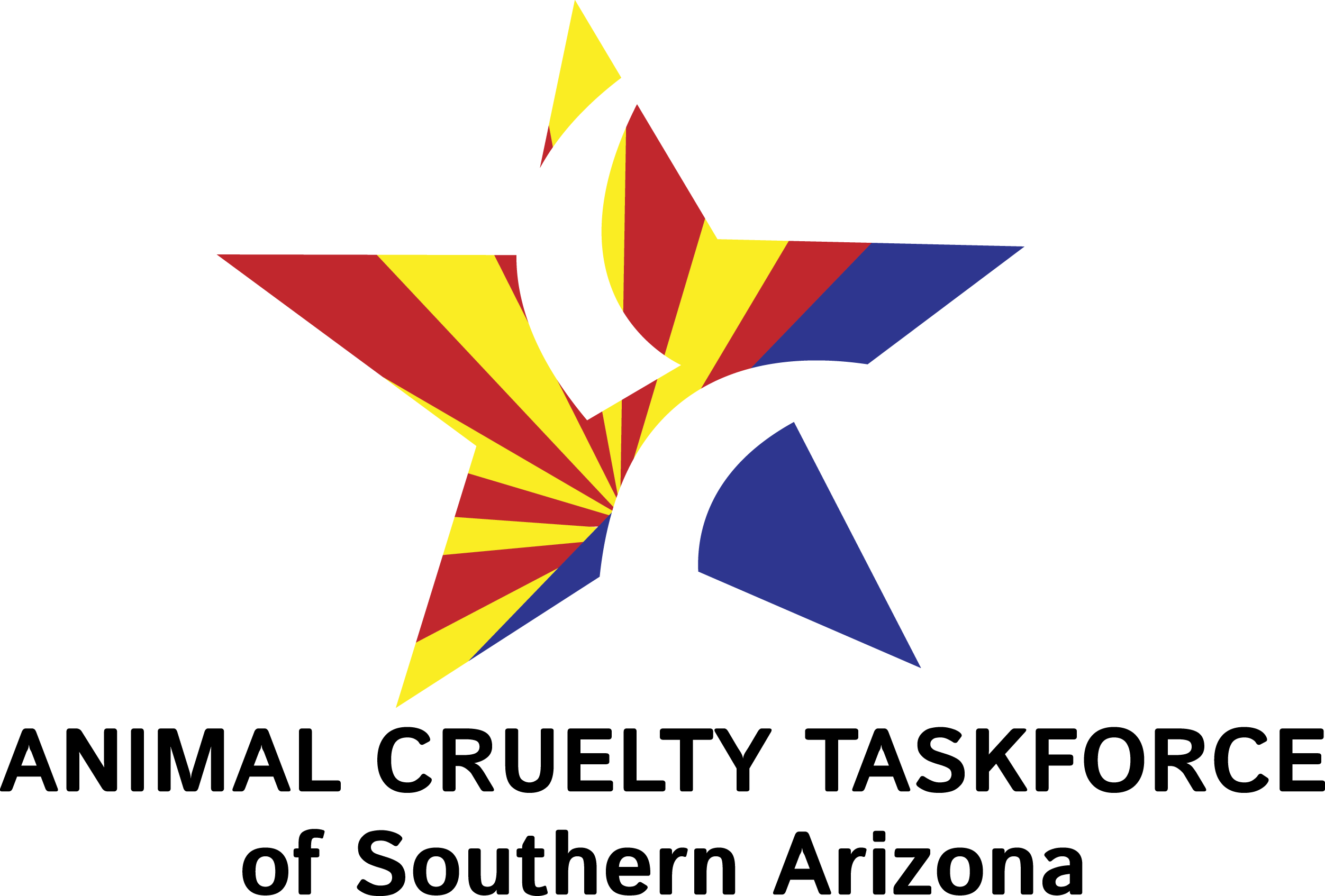Speaking for the voiceless
As a founding member of the Animal Cruelty Taskforce of Southern Arizona, HSSA has always taken a leadership role in combating violence toward animals.
They cannot speak for themselves. You may have witnessed animal cruelty or neglect in the past and not realized it. Or you thought nothing would be done even if you said something. But if you don’t say something, who will? Help us prevent animal cruelty and neglect in our community.

Court Mandated Animal Cruelty Education Class (ACE)
The Animal Cruelty Education Program is a cooperative effort between The Humane Society of Southern Arizona and member organizations with the Animal Cruelty Taskforce of Southern Arizona. The program’s purpose is to provide adults with the educational background, access to services and day-to-day skills needed to make them better pet owners.
Participants in the program have all received citations or have been adjudicated of violations relating to the care and treatment of their or other animals, or have been referred to the program by the Pima County Justice Courts, Tucson City Courts, behavioral health care providers or other agencies. The program is not a court of law concerned with the determination of guilt or innocence, but an opportunity to learn the needs and problems confronting the animals that share our homes and lives.
The 2-hour educational class is held from 9 a.m. - 11 a.m. at the main HSSA campus. Additional details will be emailed to registered participants prior to their class date.
All participants must be registered one week before they attend class. The $100 class fee is non-refundable upon registration for the class. Upon payment and attendance of the scheduled class, participants will receive a certificate of completion to present to the prosecutor.
For questions or more information, contact [email protected] or (520) 321-3704 ext. 171.
2025 Class Dates:
All classes held in person on Saturday mornings from 9:00 - 11:00 a.m.
February 8th
April 12th
June 14th
August 9th
October 11th
December 13th
Register for the ACE Class today!
How to help
Do your part to protect and report signs of animal cruelty or neglect. Often times, the biggest difference between the two is intentionality. Learning what to look for can be the difference between life and death for an animal in an unsafe situation. The humans living in those homes may also be at risk of mistreatment.
The link between animal abuse and human violence
Over the past 30 years, researchers and professionals in a variety of human service and animal welfare disciplines have established significant correlations between animal abuse, child abuse and neglect, domestic violence, elder abuse and other forms of violence. Mistreating animals is no longer seen as an isolated incident that can be ignored; it is often an indicator or predictor crime and a “red flag “warning sign that other family members in the household may not be safe. Those who commit animal cruelty have a higher rate of committing violent crimes against community members and must be reported at the first demonstration of animal cruelty or violence against animals, which might prevent future harmful events in the home.
HSSA’s animal cruelty investigator works hand-in-hand with law enforcement, including local agencies, fire departments, Arizona Livestock Investigators, and local animal services agencies to provide a seamless response to cruelty calls. Services through this branch of our department include professional training seminars, public outreach, law enforcement support services, emergency medical care and fostering for abused animals, and evidence collection.
Our program allows the public to provide information on suspected cruelty and neglect, as well as concerns about irresponsible breeders, animal vendors and other related issues. Our educational program provides a variety of programs for adults and juveniles to address these concerns. We also offer court-mandated courses about proper care and treatment of animals, a critical step in stopping the cycle of harm to pets.
You can find more information about the Animal Cruelty Task Force of Southern Arizona at www.act-az.org or on Facebook at www.facebook.com/actsaz.
Signs and Indicators of Possible Abuse or Neglect
Knowing the physical signs and symptoms of animal cruelty and neglect can help save the lives of animals in need.
Tick and flea infestation
Untreated wounds of the body
Hair loss or patches of missing hair
Extremely thin, “starved” appearance
Continued and excessive limping
Pets that cower in fear or act aggressively when approached by a person
Pets that are showing signs of injury or illness without veterinary care
Encrusted eyes
Matted hair
Excessive number of animals in the home
Deceased animals
Animals tied outside and left unattended
Animals left in hot cars that are in distress
Animals living in filthy conditions
All pets need:
Appropriate food for each species
Clean fresh water daily
Medical care for preventative services and emergency care
Adequate shelter – must be in good repair and large enough for a dog to display natural behaviors of standing up, laying down etc.
